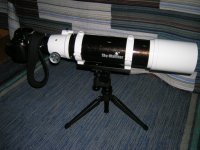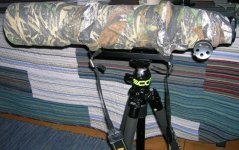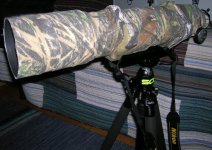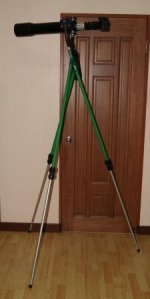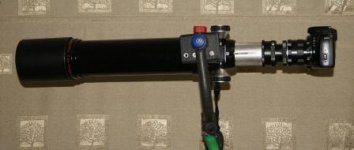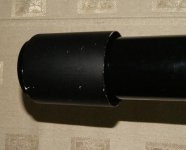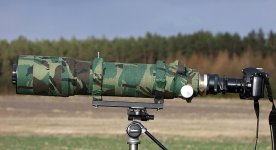So what is the attraction?
Here are a few:
Image quality, the scopes resolution, sharpness, contrast (if properly baffled/flocked), bokeh…overall image clarity is far higher that any of the lens you mentioned can do.
Price, an ED80 costs less than 400€, and it’s a 600mm scope. To get the 300 F4 to 600mm you’ll need a TC witch is more 150€ at least, that’s 1450€ and to get what? AF? At F/8 the AF is not that good anyway. And the image quality is nowhere near the level of the ED80 either. I never used the canon 300 F4 but I had two Nikkor 300 F4 witch at least are very comparable to the canon's, and really the lens alone is not as good let alone with TCs.
Reliability, a scope will last forever, there’s no electronics, hardly any mechanics to go wrong, no parts to be discontinued after a few years. Ok, there’s the chip some of us have put and the iris I have on mine, but the chip cost next to nothing and an iris like mine wont go wrong easily. On the other hand, have you seen the price for the repair of an AF motor or a VR system? Or tried getting one of that used long teles into repair? Most of these old lenses can’t be repaired anymore due to lack of parts, your Sigma 400mm is an example of that.
Serviceability, I can easily dismount and clean the scope if needed, my 200-500 for example been a few months at the factory to get rid of the huge amount of dust it had inside.
You say we need stable tripods, well sure, but that is true for any long lens work. Forget stabilization, for ultimate sharpness a solid tripod is essential, VR or IS is just a workaround, a useful one and spectacular in some occasions but a solid tripod is key.
Manual focus it’s a matter of getting used to it, and in some occasions it can actually work better than AF. And when you try to keep up with a scope focal length with those lenses with TCs (300 F4+2xTC = F/8 ) AF wont be that good anyway. And ever tried comparing manual focusing one of those lenses to a scope, a scope is far easier to focus.







